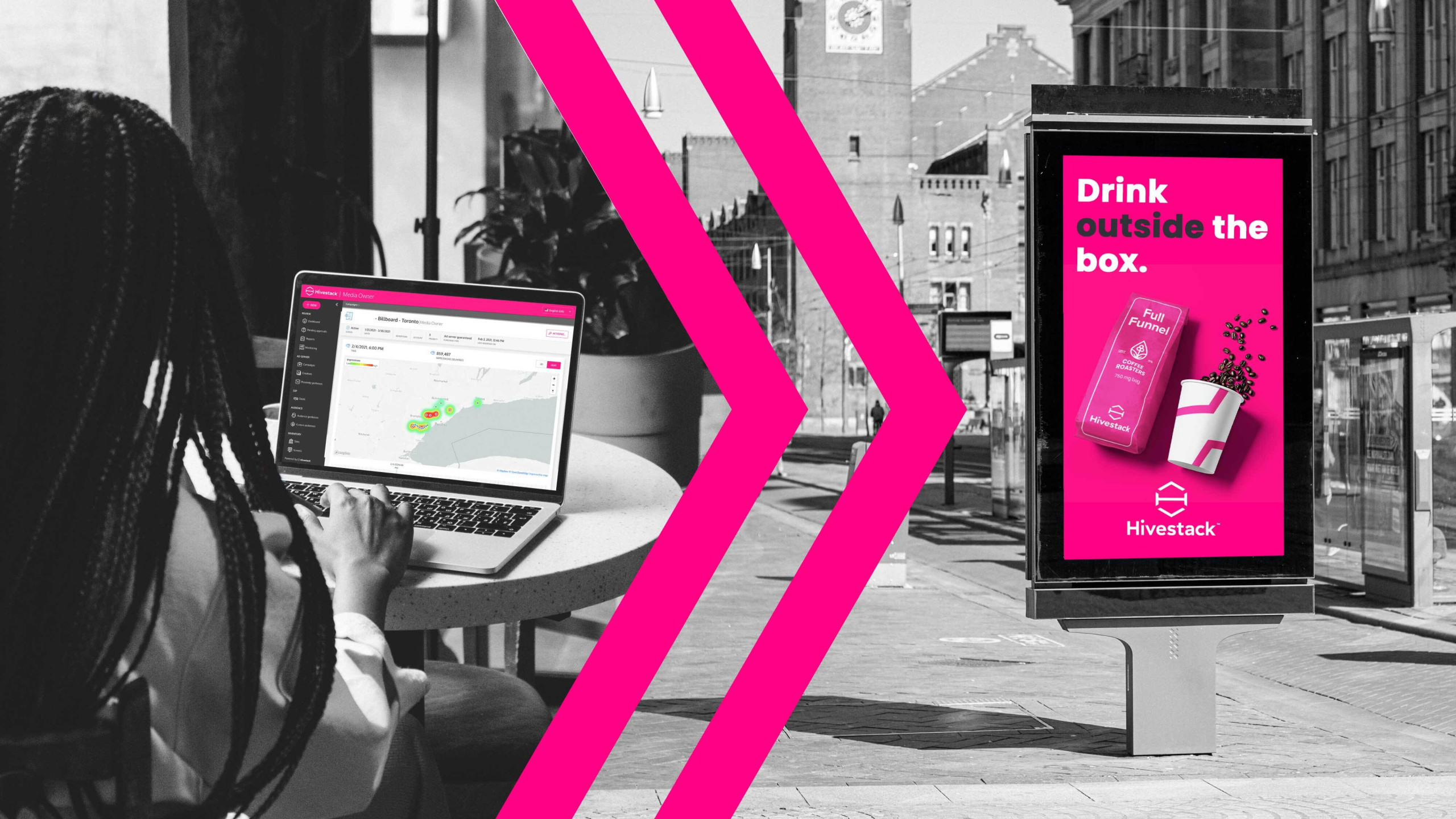February 22, 2023 | Expert Insights
A modern approach to DOOH ad serving

Unlock the full potential of your digital inventory by connecting to a holistic solution built for the future of DOOH
Ad serving in OOH is not necessarily a new emerging solution, however, in recent years there has been a shift in the paradigm, with new advancements largely being driven by technology.
The loop has dominated as far back as we can remember, but as we all have experienced, change is inevitable and for many of us there is a learning curve ahead. Here are a few things to better understand the benefits to a modernized approach to digital out of home (DOOH) advertising, a model that is shaping the future of OOH revenue management and yield optimization.
Looking back at where it all started, billboards were once hand painted, then printed and, when the scrolling mechanism was implemented in the 1970’s-1980’s the loop was created. Fast forward to the early 2000’s digital is born, CMS systems with playlists come about and the loop (whilst digital) continues to flourish. But in the early 2020’s the industry started to see a bit of a disruption with the rise of DOOH ad servers that allow for more intelligent decision making based on revenue maximization.
Long before DOOH, digital ad serving has been a steadfast component in the online ad tech landscape. The digital ad server first arrived in 1995 and acted as a storage and delivery mechanism for online advertising. Since then it has grown beyond its primary functionality and now offers an advanced interface for ad management and optimization. As ad serving continues to evolve, open source and server side features continue to create what we refer to as a "full stack solution" while the application of data and audience measurement will further mature the robust ad server into a more holistic revenue generation platform in the years to come. Other mediums have their fingerprints all over the development thus far however DOOH represents a missing jewel in the Omni Channel ecosystem that might just represent its biggest medium opportunity yet.
DOOH is thriving, with a global market value of $9.2 billion last year, and it is expected to reach $15.9 billion by 2027 (Source: Statista, 2023). Innovation including automation within the channel, the continued growth of programmatic DOOH, along with increased adoption of impression-based delivery have enabled publishers to improve access for buyers and drive new, additional revenue.
Here we dive into 3 key reasons publishers should embrace an intelligent DOOH ad server:
1. Yield optimization and revenue maximization across direct and/or programmatic sales
By enabling publishers to consolidate direct-sold and programmatic campaigns comprehensively into one solution, they stand to gain full visibility of every supply opportunity and determine how their DOOH screens can be monetized using a host of controls, monitoring abilities, and revenue streams. Modern DOOH ad servers such as The Hivestack Ad Server combine the best of both worlds, traditional strategies from the loop-based model with programmatic technology for optimal ad serving and scheduling while removing much of the manual labor and costs.
It can provide highly valuable insights, measurement and reporting while balancing campaign priorities with a laser focus on yield optimization all in the blink of an eye. Publishers can leverage this streamlined reporting to continually assess effectiveness, evidence value, and fine-tune elements of their mix to optimize yield and performance.
2. Real-time decision making & pacing optimization
An intelligent ad server leverages automation that allows for a faster and more efficient delivery of DOOH campaigns. The platform logic is programmed to identify yield in a way that opens up additional opportunities for increased revenue and, where applicable, additional revenue from programmatic campaigns where direct inventory has not been booked.
At the same time, it has the pacing agility to pause, stop or even increase spend for a campaign in high performing screens or where there is a high audience density. An intelligent ad server also has the ability to pace according to a number of factors and variables instead of just one protocol, ensuring seamless delivery of all campaigns.
3. Integrated data, targeting and measurement
Geotemporal data is used to target custom audiences to purposefully activate DOOH screens based on audience concentration. This geotemporal decisioning engine allows media owners to optimize inventory allocation to ensure high performance of ad delivery at the most optimal moment.
Additionally, publishers can tap into unprecedented custom targeting through triggers that can be set for specific conditions such as weather or traffic conditions to drive contextual relevance according to audience movement patterns and proximity to points of interest.
Post delivery, publishers can benefit from unparalleled measurement and insights including lift studies that look at the performance of a campaign. From planning, delivery and reporting, data unlocks incredible opportunities for OOH publishers to better manage their screen networks.
We are no longer in a place where loops rule in OOH. To future-proof DOOH inventory management and most importantly, save precious time and money, media owners should take advantage of world class ad tech with a DOOH Ad Server.
Ready to be a part of the future? Contact us today to learn more about the Hivestack Ad Server.


